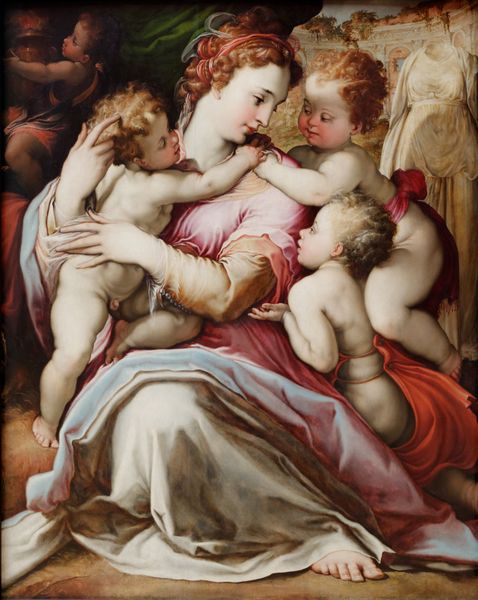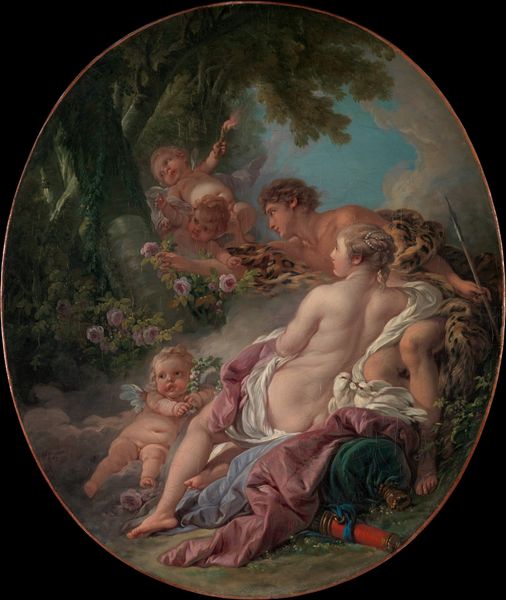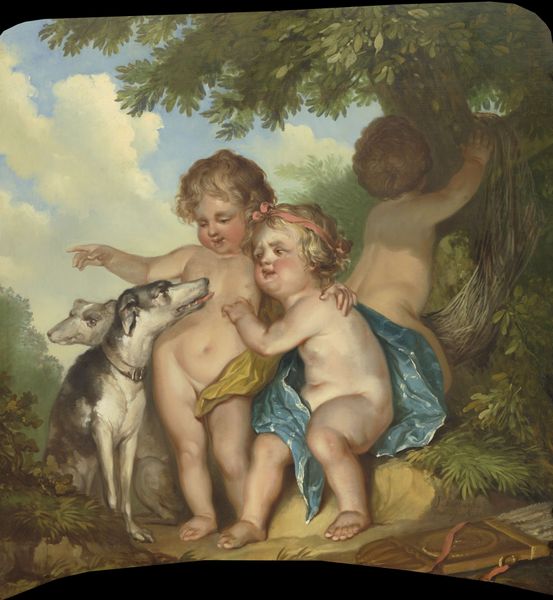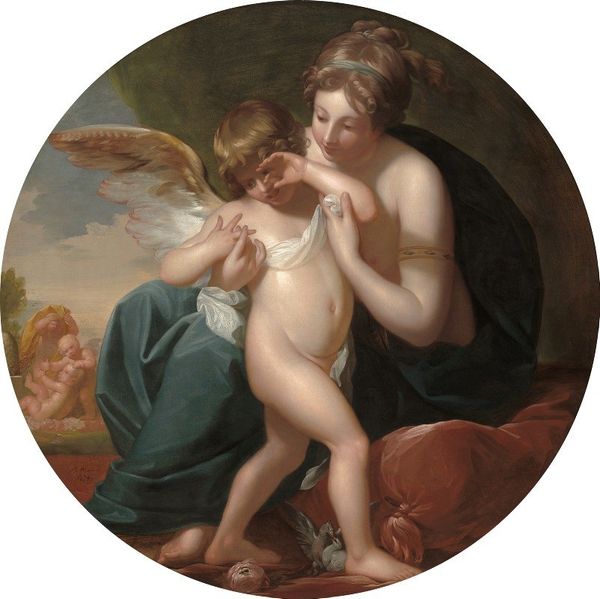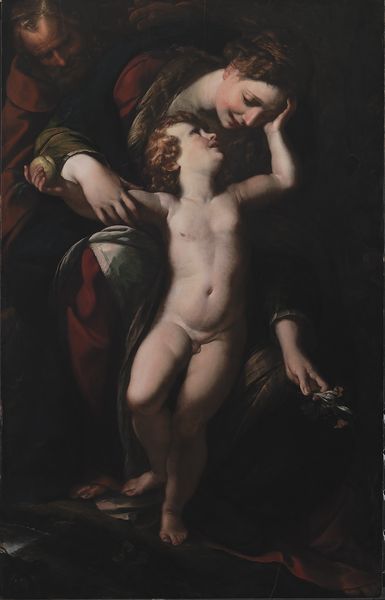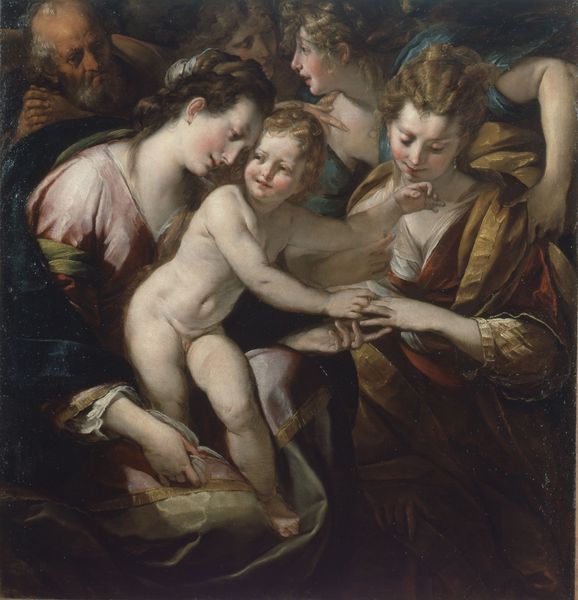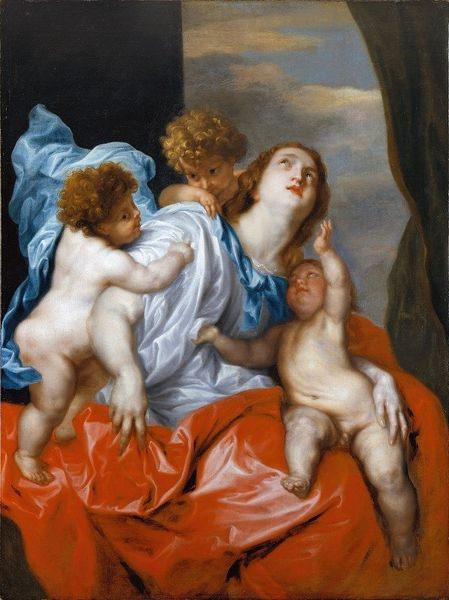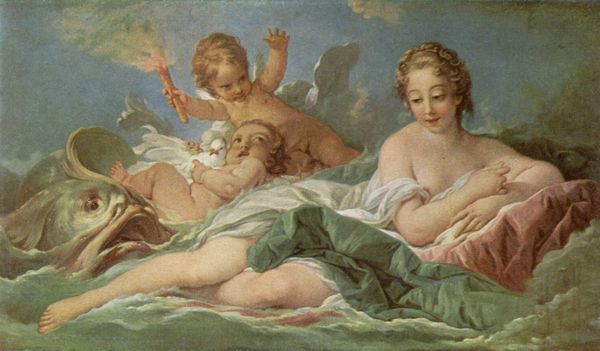
painting, oil-paint
#
portrait
#
high-renaissance
#
allegory
#
painting
#
oil-paint
#
figuration
#
oil painting
#
group-portraits
#
genre-painting
#
academic-art
#
italian-renaissance
#
italy
#
portrait art
#
fine art portrait
Dimensions: 9 x 7 1/4 in. (22.86 x 18.42 cm) (sheet)
Copyright: Public Domain
Curator: Welcome! We’re standing before Alessandro Allori’s “Charity,” created around 1560. The artwork, an oil painting, is part of the Minneapolis Institute of Art’s collection. What’s your initial response to this Renaissance depiction? Editor: Immediately, I'm drawn to the sense of classical abundance. The lush landscape, the plump figures, and of course, the grapes all evoke themes of fertility and nurturing. It seems a very idealized version of motherhood, wouldn't you say? Curator: Absolutely. And understanding the period is critical. Allori was working within a context profoundly shaped by religious, political, and social ideals. This representation of Charity embodies the virtues that were valorized in women, reflecting a particular understanding of the female role in society at the time. There is a reinforcement of gendered labor that bears interrogation, wouldn't you agree? Editor: Precisely. Notice, too, how Allori uses light and shadow to create a sense of depth. The Madonna figure seems bathed in a soft, ethereal glow, further emphasizing her purity and divine status. What’s your take on how symbols are used? The vase looks quite deliberate. Curator: Yes, let’s think about how the Madonna figure acts as a timeless symbol herself. Throughout centuries, depictions of motherhood are employed to communicate various beliefs, ideals, or cultural values. Considering the artist's position during a time of deep sociopolitical upheaval also is key. This artwork becomes an interesting intersection where aesthetic traditions and cultural memory interact. What kind of memories would this type of imagery evoke? Editor: Given Allori’s time and context, it reminds me of a larger narrative within the history of Italian art where religious figures serve to reassure and ground individuals during uncertain eras. The viewer seeks comfort and resolution, but at the same time, what message might be sent through this image? I wonder if a modern audience can separate those two feelings. Curator: That push-and-pull of ideals and lived reality definitely creates productive tension. And it pushes us to think more about representation beyond aesthetics, even questioning those inherited power structures at play. It’s more than the brushstrokes and form. It is our own responsibility now. Editor: It certainly is a resonant piece. Thank you for sharing this. Curator: Of course! This deeper perspective has given me new thoughts about this work, as well.
Comments
No comments
Be the first to comment and join the conversation on the ultimate creative platform.
